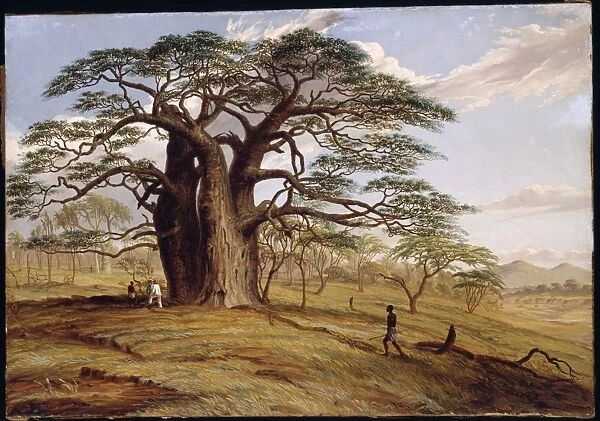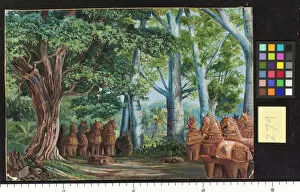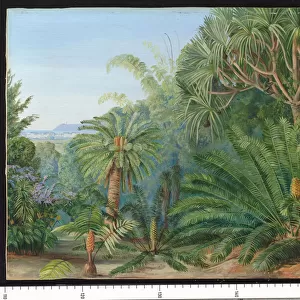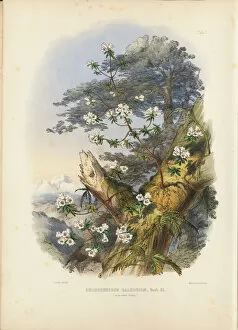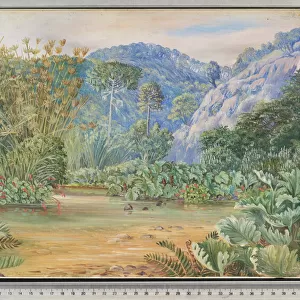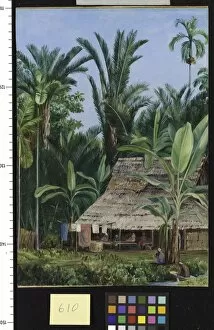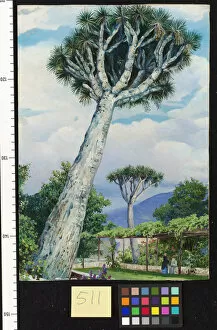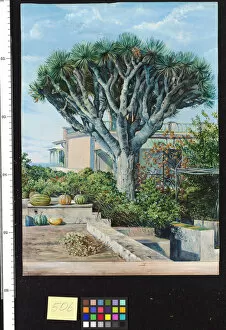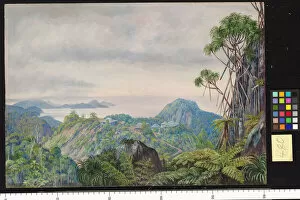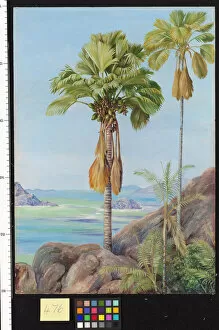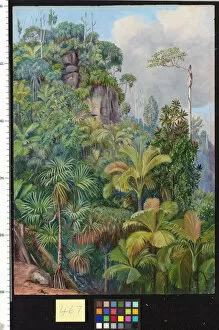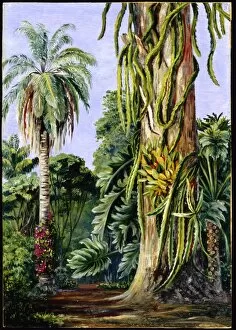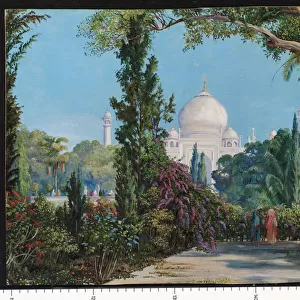Rights Managed > Botanical Art > Landscapes
Baobab near the bank of the Lue (Adansonia digitata)
Purchase This Item For Download
world rights, single editions, non exclusive use
Filename: BAI00000026.jpg
Size: 10037 x 7039 (12.3MB)
Date: 3rd December 2007
Author: Baines, Thomas (1820-1875)
© RBG KEW
![]()
Wall Art and Photo Gifts from Kew Images
Baobab near the bank of the Lue (Adansonia digitata)
Oil on canvas. Inscribed in paint on verso of canvas BAOBAB near the bank of the Lue, a tributary of the Zambesi River above Kabrabasi. It seems to consist of three original stems now united as they have grown up. The whole group is 17 yards in circumference and two of the stems now united In 18 feet from the ground 13 yards. Novr 27 1858. The painting was executed around seven months later at Tete. This particular tree was observed by Baines while accompanying Dr. David Livingstone on his Zambesi Expedition. Livingstone set out to explore the rapids at Kebrabasa, finally reaching them on the 9th November 1858. Of the surrounding topography he noted, The country, between Tette and Panda Mokua, where navigation ends, is well wooded and hilly on both banks...Conspicuous among the trees, for its gigantic size, and bark coloured exactly like Egyptian syenite, is the burly Baobab. It often makes other trees of the forest look like mere bushes in comparison
Media ID 654507
© RBG KEW
19th Century Expedition Exploration Explorer Timber Tree Useful Plants
MADE IN THE USA
Safe Shipping with 30 Day Money Back Guarantee
FREE PERSONALISATION*
We are proud to offer a range of customisation features including Personalised Captions, Color Filters and Picture Zoom Tools
SECURE PAYMENTS
We happily accept a wide range of payment options so you can pay for the things you need in the way that is most convenient for you
* Options may vary by product and licensing agreement. Zoomed Pictures can be adjusted in the Cart.

